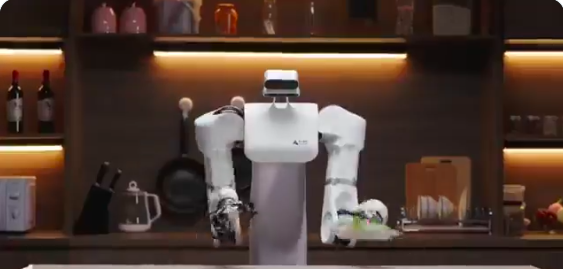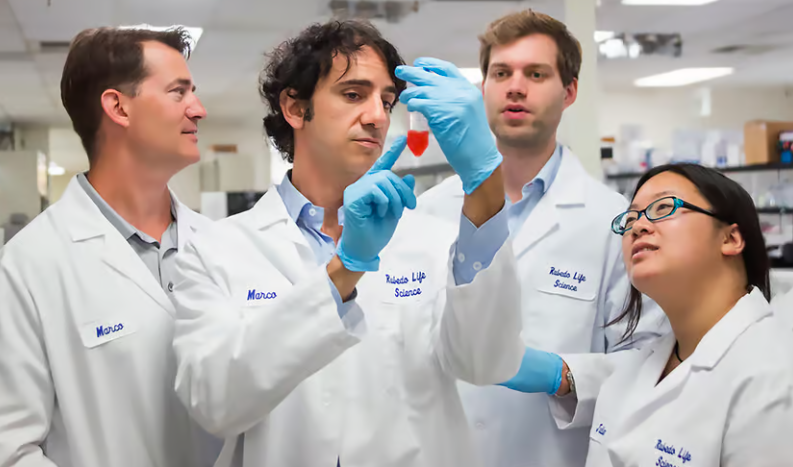Nvidia’s CEO, Jensen Huang personally handed over te initial DGX H200 to OpenAI
Nvidia CEO Jensen Huang took on an addtional role as a delivery person, personally bringing the world’s inaugural DGX H200 server to OpenAI’s Sam Altman and Greg Brockman. The trio marked this milestone with a shared photo on Twitter/X, celebrating the successful delivery by Jensen Huang to OpenAI.

The DGX H200 is a cutting-edge GPU-based server from Nvidia, featuring the new H200 Tensor Core GPU enclosed in a robust enterprise-grade server chassis. The H200 GPU, based on the Hopper architecture, represents a significant leap forward from its predecessor, the H100. The new card boasts 141 GB of memory running at 4.8 TB/s, compared to the H100’s 80 GB at 3.3 TB/s. Nvidia has dubbed the H200 as “the world’s most powerful GPU for supercharging AI workloads”, a claim that stands uncontested by many.
Astribot just dropped “Hello World”
Information from Astribot’s website reveals that the company was founded in 2022 in Shenzhen. The development of their robot took approximately a year, and it is slated to become commercially available later this year. The parent company, Stardust Intelligence, was founded by Lai Jie, who has prior experience with Tencent Robotics Laboratory, Baidu, and Hong Kong Polytechnic University.

Astribot’s name is inspired by the Latin phrase “Ad astra per aspera,” translating to “a journey through hardship to reach stardust,” symbolizing the company’s enduring commitment to advancing and popularizing AI robot technology.
If Astribot proves to be successful in the long term, it will likely intensify competition in the robot industry and capture the attention of other humanoid robot manufacturers. This could mark the beginning of a new phase in the “bot wars.”
An anti-aging biopharmaceutical company has secured $40 million in funding to initiate human trials
California-based biopharmaceutical company Rubedo Life Sciences has secured $40 million in funding to initiate human trials of its drug RLS-1469, which aims to target senescent cells associated with age-related diseases.

Alex Morgan, a partner at Khosla Ventures, emphasized the importance of improving quality of life as people live longer. Rubedo’s focus on addressing senescent cells, which contribute to age-related diseases through inflammation and immune modulation, is seen as a promising step towards enhancing health span.
The U.S. Department of Homeland Security has established an advisory board focused on AI safety and security
The U.S. Department of Homeland Security (DHS) has unveiled a blue-ribbon advisory board that includes the CEOs of OpenAI, Microsoft, Google parent Alphabet, and Nvidia. This board will provide guidance to the government on the impact of artificial intelligence (AI) on critical infrastructure.

The advisory board aims to develop recommendations for various sectors such as transportation, pipeline and power grid operators, internet service providers, and others. Its goal is to help prevent and prepare for AI-related disruptions that could affect national or economic security, public health, or safety.
Homeland Security Secretary Alejandro Mayorkas emphasized that the board’s role is to ensure the safe deployment of AI technology and address threats posed by AI to essential services including energy, utilities, transportation, defense, information technology, food and agriculture, and financial services.
Mayorkas emphasized the practical focus of the board, highlighting the importance of implementing AI in daily life with tangible solutions rather than theoretical discussions. He underscored the significance of involving key developers of AI in this advisory effort.
A Chinese research team has introduced the first text-to-video AI model that rivals Sora, an existing benchmark in this field

ShengShu-AI, a Chinese tech firm, along with Tsinghua University, has unveiled a text-to-video artificial intelligence (AI) model named Vidu, which is positioned as China’s first equivalent to Sora, marking a significant milestone in China’s rapid advancements in critical AI technologies.
Introduced at the Zhongguancun Forum in Beijing, Vidu can generate a 16-second 1080P video clip with a single click. It leverages a self-developed visual transformation model architecture called Universal Vision Transformer (U-ViT), integrating two text-to-video AI models: Diffusion and Transformer.
The development of Vidu comes shortly after the release of Sora by US-based OpenAI, showcasing the team’s determination to advance their research in alignment with global technical advancements. Zhu Jun, vice dean of Tsinghua University’s Institute for Artificial Intelligence and chief scientist of ShengShu-AI, highlighted the technical prowess of Vidu’s architecture, which was proposed earlier than Sora’s DiT (Diversity in Transformation) model architecture.
During a live demonstration, Vidu showcased capabilities in simulating the real physical world, generating scenes with intricate details including realistic light and shadow effects and nuanced facial expressions. It also excels in generating complex dynamic shots, distinguishing itself from static image generation.
Notably, Vidu’s development in China provides it with a deep understanding of Chinese cultural elements, enabling it to create images featuring unique Chinese characters such as pandas and dragons, further highlighting its adaptability and localization capabilities.
